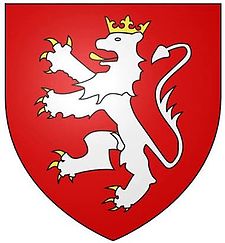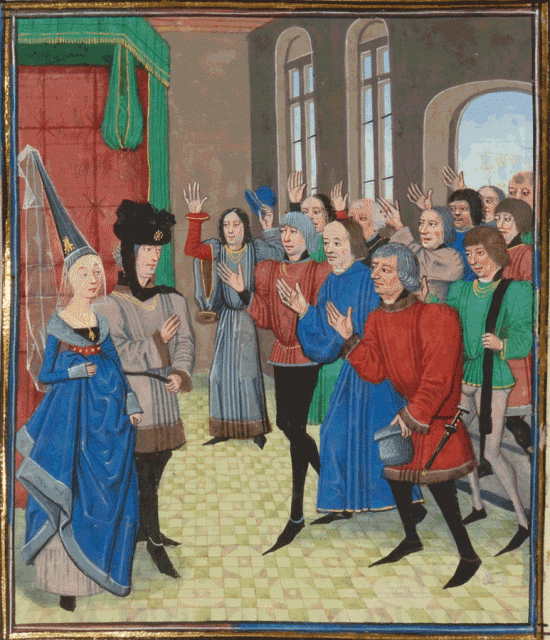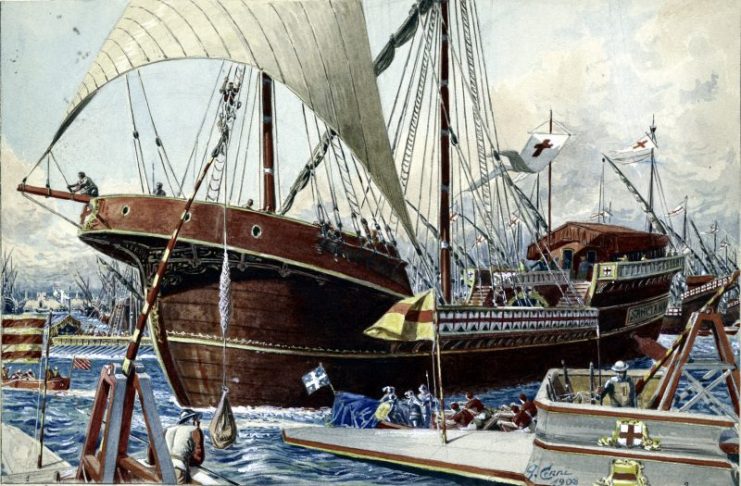Her small fleet of three ships flew a bloody red banner and struck terror into the heart of the French fleet.
The image many people have in their minds about pirates is that of the swashbuckling, peg-legged Caribbean buccaneer of the 17th and 18th centuries, and exclaiming “arrh, arrh, arrh, my hearties” over and over for some reason – usually rum. These pirates, for the most part, are imagined as men.
But as long as people have sailed the seas, there have been pirates. Japanese pirates helped cause a war between Kublai Khan and their homeland. Vikings didn’t just search for riches in castles and towns, but the many ships plying their trade in the North and Baltic Seas. Today, the navies of many nations travel the oceans and seas of the Middle East in search of the pirates based out of Somalia. Again, most of the people have been men.

Anne Bonny in the Caribbean and Ching Shih in China were two famous female pirates. Both of those adventurous women were mainly after profit, but for one female privateer, the motive was purely revenge – against the King and country of France.
Jeanne de Clisson lived five hundred years before Anne Bonny, and she didn’t fly the “Black Banner” of the later Caribbean pirates. In the mid-1300s, Jeanne de Clisson and her small fleet of three ships flew a bloody red banner and struck terror into the heart of the French fleet. Nicknamed the “Lioness of Brittany”, Jeanne operated in narrow but rough seas, based out of the rugged Brittany coast, with its many rocky shoals, currents and hidden bays and coves. She sailed in the relatively narrow English Channel but evaded capture and died a peaceful death in her own castle.

Jeanne’s story is intertwined with the complicated politics of 14th century France. She was a noble born in the Vendee’ and married another noble, Olivier de Clisson from Brittany, the unique and ethnically diverse peninsula on the northwestern French coast. In the 1300s, Brittany was a semi-autonomous duchy, whose duke owed loyalty, taxes and sometimes men (for the army) to the king, but was essentially free to run the territory as he saw fit.
One of the problems with Brittany is that it bordered on Normandy, which at the time was controlled by England (William the Conqueror, who took the English throne in 1066, was the Duke of Normandy, and control of the area had remained with English monarchs since that time). In 1341, a power struggle began between the English and French for control of Brittany when the duke died with no male heir. The Frenchman noble Charles de Blois believed he had the best claim, and the English supported John of Montfort, who had ties to the aristocracy of England, France, and Brittany.

Olivier de Clisson fought for de Blois, but Charles suspected the de Clisson was not as loyal as he professed: de Clisson was captured by the English and the French were offered a low ransom for his return, suggesting to some that he was an English spy. Another version has it that the French king believed this story or had some other “evidence” of de Clisson’s treason. Either way, the king had Olivier beheaded, and his head displayed on a pike in Nantes, capital of Brittany.
Jeanne de Clisson, either because she didn’t believe her husband a traitor or at the manner of his death (accounts vary), became enraged and vowed revenge not only against Charles de Blois but the King of France as well. Though a woman of means, she needed to raise more money – because she wanted to raise an army! Some accounts declare that she entered into prostitution to help raise the money she needed. She did finally gather men around her, but the many castles and fortresses of Brittany and coastal France were too strong for a small band of men and one woman, so she bought ships instead.

For 13 years, from 1343 to 1356 her so-called “Black Fleet” terrorized the northern French coast, sinking supply ships and other vessels owned by the King of France. Seizing ships, Jeanne and her crew apparently killed most of the crew, occasionally leaving one or two alive to sew terror, and then beheaded any aristocrats on board, which meant not only the officers but any blue-blooded passengers as well.
Soon she became known, at least to some who thought her a hero, as the “Lioness of Brittany”. Many in Brittany did not feel any loyalty to the French king. They spoke Breton, were Celtic in origin and did not consider themselves in any way French.
The king, however, may have had other names for her, and for thirteen years, attempted to hunt her down, unsuccessfully. Accounts differ, but many historians believe that she had allied herself with the English, for their ships, constantly plying the waters of the Channel, left her alone – and she them. She may also have aided the English in their campaign against the French in 1346, which resulted in the stunning English victory at Crecy.

In 1350, Philip IV died, but Jeanne remained allied with the House of Montfort and the English for some time after. But before the final victory of the Montfort’s and the English in 1364, she married the English noble Sir Walter Brenley, an aide to King Edward III. In a final blow to French honor, she and Brenley moved into the Castle of Hennebont in Brittany, under the protection of the powerful House of Montfort Already old for the time when she took up arms against the French in 1343, Jeanne de Clisson died in 1359, before she could see the final humiliation of the French in 1364.
